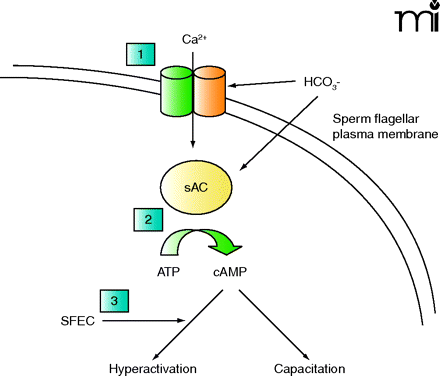
- Institution: Stanford Univ Med Ctr Lane Med Lib/Periodical Dept/Rm L109
- Sign In as Member / Individual
Inhibiting Sperm Motility for Male Contraception: Will the Sperm Tail Be its “Achilles Heel”?

Figure 1.
Processes involved in sperm motility, hyperactivation, and capacitation, and potential contraceptive targets. In normal sperm, these processes are mediated by an influx of calcium and bicarbonate encountered in the female reproductive tract. These processes are driven by increased intracellular cAMP. Potential contraceptive motility targets could include: 1) “CatSper” transmembrane calcium channels (two of four shown); 2) “soluble” adenylyl cyclase; and 3) SFEC, the inhibition of which could block the delivery of ATP necessary to generate flagellar activity. HCO3−, bicarbonate ion; sAC, soluble adenylyl cyclase; SFEC, sperm flagellar energy carrier protein.


